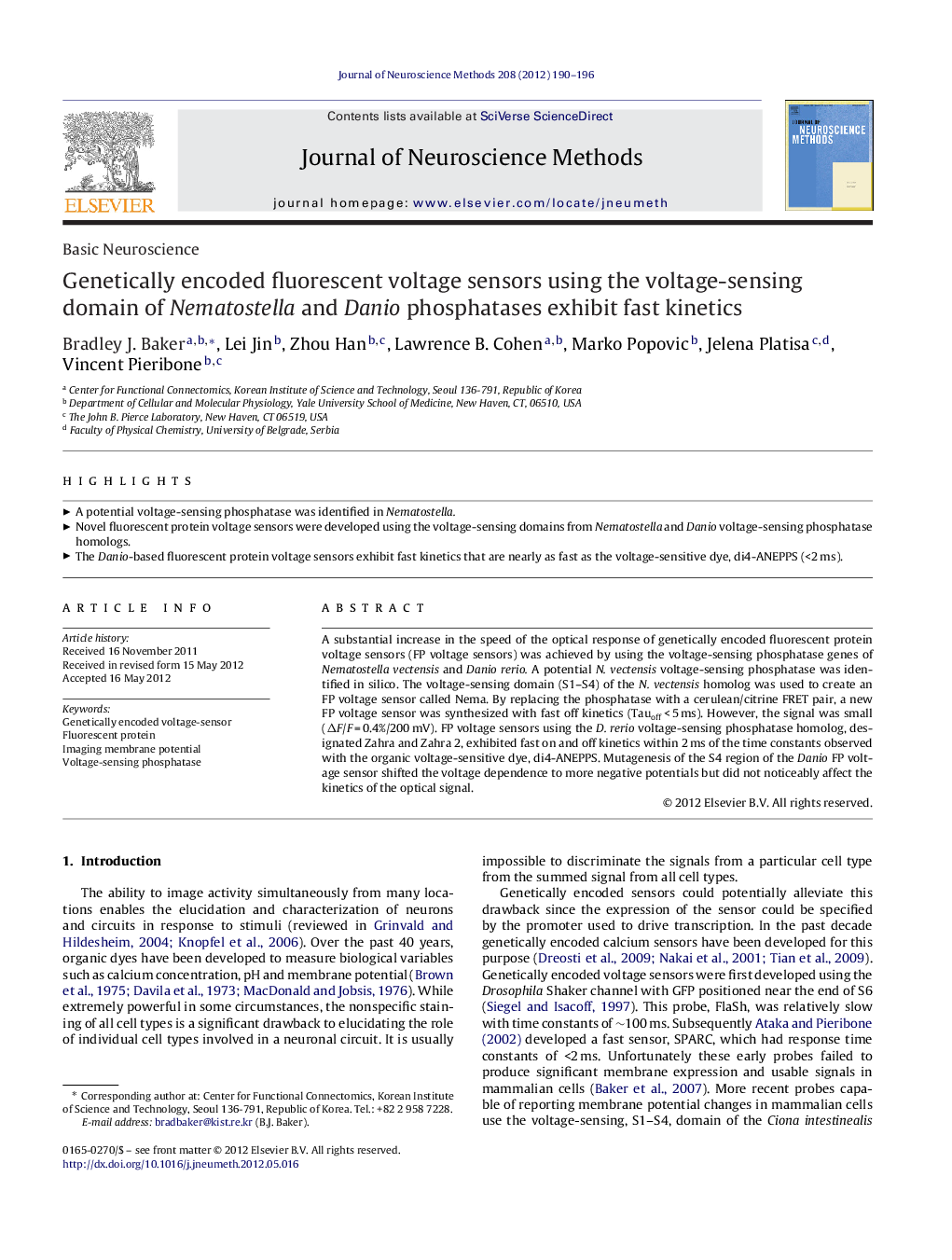| کد مقاله | کد نشریه | سال انتشار | مقاله انگلیسی | نسخه تمام متن |
|---|---|---|---|---|
| 6269291 | 1295132 | 2012 | 7 صفحه PDF | دانلود رایگان |

A substantial increase in the speed of the optical response of genetically encoded fluorescent protein voltage sensors (FP voltage sensors) was achieved by using the voltage-sensing phosphatase genes of Nematostella vectensis and Danio rerio. A potential N. vectensis voltage-sensing phosphatase was identified in silico. The voltage-sensing domain (S1-S4) of the N. vectensis homolog was used to create an FP voltage sensor called Nema. By replacing the phosphatase with a cerulean/citrine FRET pair, a new FP voltage sensor was synthesized with fast off kinetics (Tauoff < 5 ms). However, the signal was small (ÎF/F = 0.4%/200 mV). FP voltage sensors using the D. rerio voltage-sensing phosphatase homolog, designated Zahra and Zahra 2, exhibited fast on and off kinetics within 2 ms of the time constants observed with the organic voltage-sensitive dye, di4-ANEPPS. Mutagenesis of the S4 region of the Danio FP voltage sensor shifted the voltage dependence to more negative potentials but did not noticeably affect the kinetics of the optical signal.
⺠A potential voltage-sensing phosphatase was identified in Nematostella. ⺠Novel fluorescent protein voltage sensors were developed using the voltage-sensing domains from Nematostella and Danio voltage-sensing phosphatase homologs. ⺠The Danio-based fluorescent protein voltage sensors exhibit fast kinetics that are nearly as fast as the voltage-sensitive dye, di4-ANEPPS (<2 ms).
Journal: Journal of Neuroscience Methods - Volume 208, Issue 2, 15 July 2012, Pages 190-196